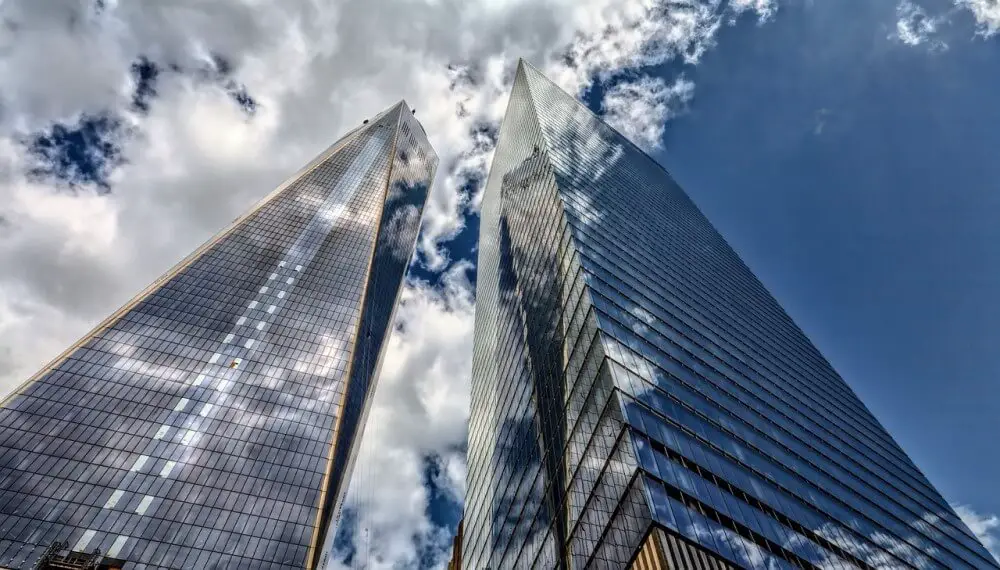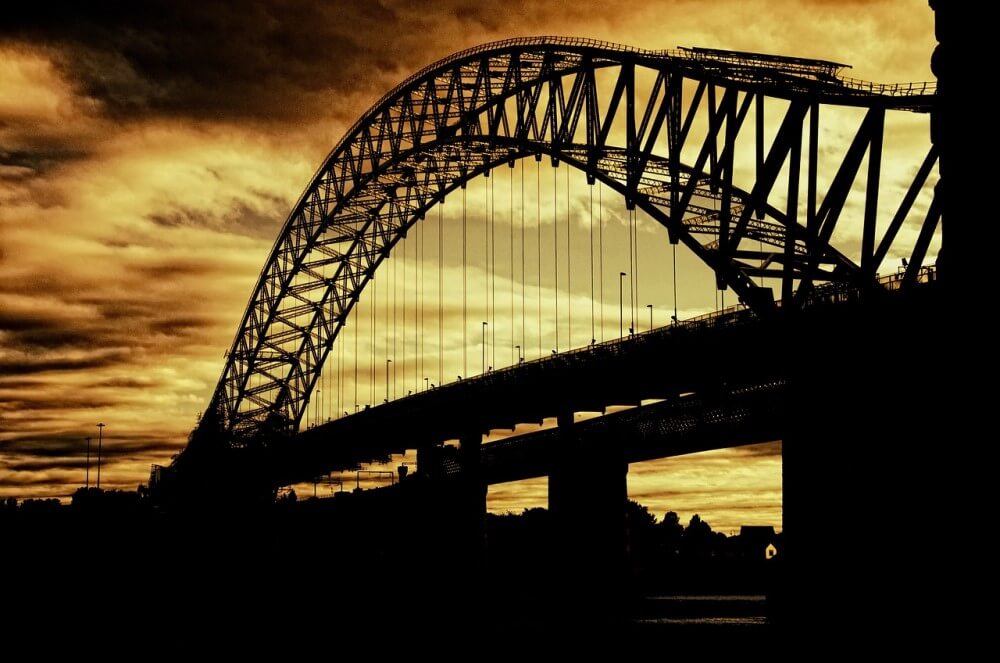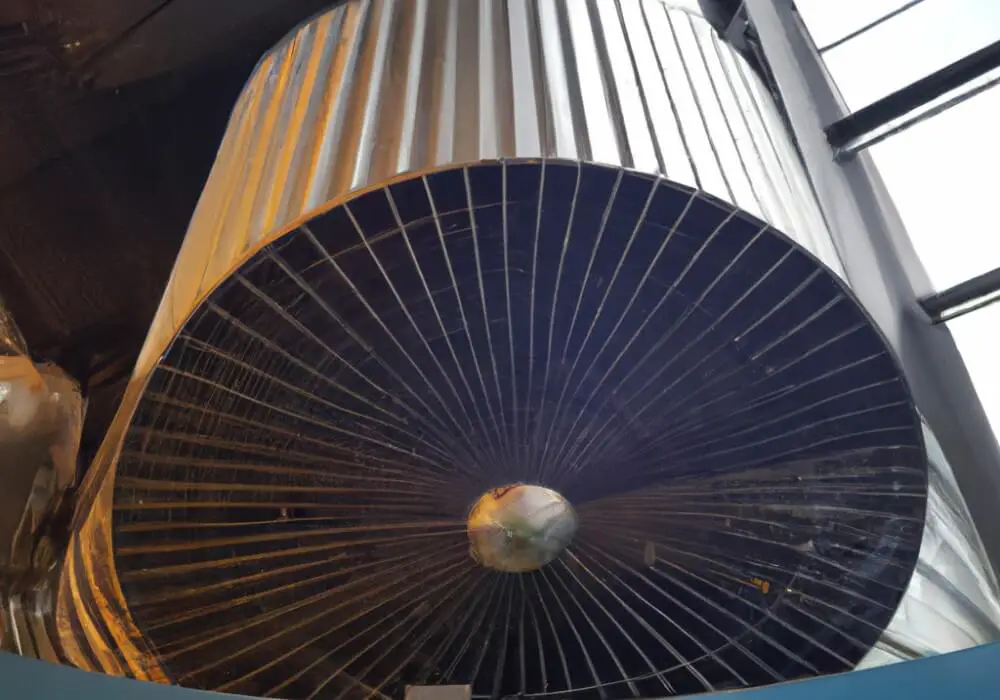Making sure buildings remain undamaged from the effects of all external forces is one of an architect’s main tasks. One of the main instruments they can employ to help with this task, particularly in high-wind or earthquake prone areas, is a Tuned Mass Damper (TMD).
Tuned Mass Dampers are a cost-effective way of preventing buildings from being affected by extreme vibrations, and are commonly used in a variety of structures throughout the world.
From tall buildings to tunnels, TMDs are an essential device for structural engineers, allowing them to increase structural stability and reduce damage.
In this Building Wiki, we take a closer look into what a tuned mass damper is, why and how it is used, and its benefits. We’ll also explore which types of building tuned mass dampers are found in and why they are so important for environmental control.
What is a tuned mass damper?
In short, a tuned mass damper is a device used to reduce unwanted vibrations in structures such as buildings, bridges, and towers. Often, they are designed to minimise the shaking caused by winds or earthquakes. TMDs do this by attaching a secondary mass, connected to the main structure by a spring and damper, to move in opposition to the vibrations.
For a real-life example of tuned mass dampers in action, stand on top of a tall building on a very windy day. You’ll notice that the building sways. This is where TMDs come in, as they counteract the natural vibrations of the structure and essentially move the building the opposite way.
Where are tuned mass dampers used?
Although tuned mass dampers are most commonly found in tall buildings and towers, you’ll also see them on road bridges, spires and pylons. TMDs have even been used in motorsports and in production cars, as a way to keep a car balanced when travelling at high speed.
Some notable buildings that have a tuned mass damper installed include Taipei 101 Skyscraper in Taiwan, CN Tower in Toronto and One World Trade Center in New York. The first building to ever use a TMD was the John Hancock Tower in Boston.
As far as other structures are concerned, a famous example of a tuned mass damper being installed post-construction was Millennium Bridge in London. Here, the bridge gained a reputation for being ‘wobbly’ and swaying when people crossed it. Due to this, a tuned mass damper was added.

How does a tuned mass damper work?
Put simply, tuned mass dampers work due to three components to a tuned mass damper, which are the damper, spring and the mass. The TMD, in essence, is a secondary mass that’s installed in the interior of a structure, connected by the spring and damper.
The spring and damper have a regulated level of stiffness and damping that resonates at the same frequency of any external forces. When the rest of the mass is moving as a result of these forces, the tuned mass damper moves independently to counteract it.
Why are tuned mass dampers used in buildings and structures?
The reason why tuned mass dampers are used in buildings and structures of different types is to ensure that they remain stable. In tall buildings, bridges and other tall structures, external factors like wind, ground movement and human activity can place their foundations under strain.
TMDs alleviate this strain by counteracting whichever forces are placed upon it, with its mass, damper and stiffness system moving freely within the structure.
In tall buildings, they are usually placed high up in the structure, near the middle, whereas on bridges they may be placed periodically along its span. In the case of the latter, TMDs may also help to stem the vibratory effect of large amounts of traffic.
All in all, this architectural device has the effect both of reducing the risk of structural damage but also increasing the comfort levels of those who are using whichever structure it is placed on.
What are some of the benefits of using a tuned mass damper?
There are numerous benefits to using tuned mass dampers in structures. Some of them include:
- Reducing the effects of vibration – TMDs reduce the amplitude of vibrations and other external forces.
- Ensuring structural stability – Tuned mass dampers make sure that structures are kept stable by controlling the level of lateral and vertical movement.
- Improving user comfort – all users of structures with tuned mass dampers experience a greater level of reassurance from high structural stability.
- Low-cost – compared to some other methods of structural stabilisation, tuned mass dampers are relatively cost-effective.

Can a tuned mass damper be retrofitted to an existing structure?
The short answer is yes, a tuned mass damper can be retrofitted to an existing structure. In order to do this, building planners must first assess the buildings to measure the current resonations. Then, they can install a specific tuned mass damper that will cater to the type of building in question.
Once the tuned mass damper is installed, it is connected to the rest of the structure with the help of brackets and other mechanical aids. Then, the new instrument is tested and tuned to make sure it is correctly adjusting to the rest of the building’s movements.
How is the performance of a tuned mass damper tested and monitored?
A tuned mass damper’s performance is measured mainly by numerical simulations and situational testing. Through this method, building planners can accurately model how the installed tuned mass damper will react to extreme vibrations. Especially, it will monitor how effective it is at reducing the amplitude of these movements.
This testing can be performed either on-site or in an off-site location, such as a laboratory or testing facility.
After tuning and testing is complete, the newly erected TMD is monitored over a prolonged period of time, with the mass, damper and spring tested to check it still performs its job correctly. This task is complemented with testing instruments such as the accelerometer.
Thanks for reading our building wiki on tuned mass dampers. They are an often hidden but vital component of what makes tall buildings so stable. Take a look for one the next time you are driving along a high bridge!
For more news, compilations and discussions from the world of urban construction and architecture, explore our selection of skyscraper and tall building articles.
Or, for similar guides to definitions and meanings of terms within the building profession, take a look through our range of building wikis, including a guide to what is a ha-ha.
Last Updated on 10 March 2023 by Michael
